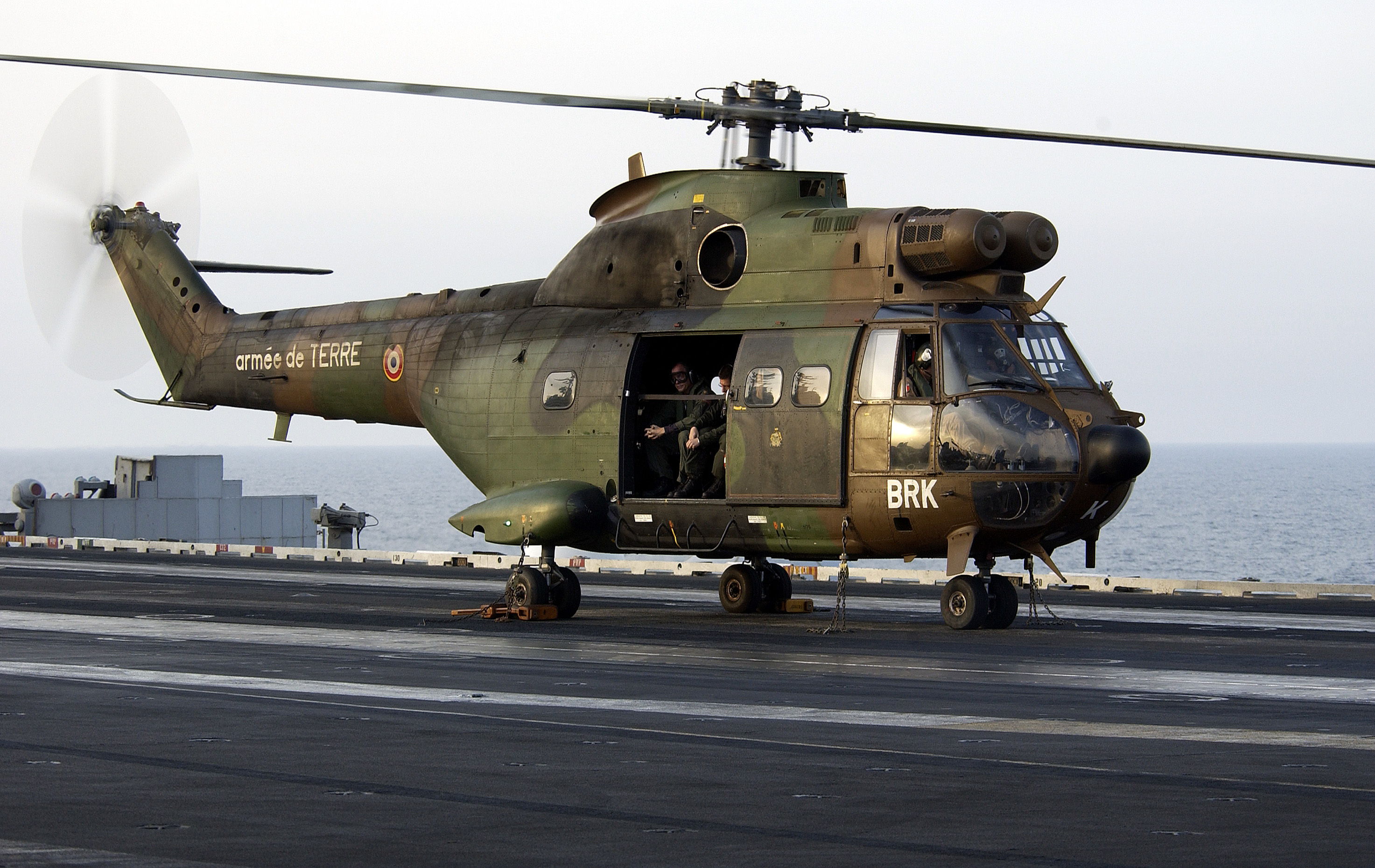|
Operation Meebos
Operation Mebos occurred during July and August 1982 with the objective of attacking SWAPO's People's Liberation Army of Namibia (PLAN) bases and new regional headquarters in Southern Angola by the South African Defence Force (SADF) based in South West Africa/Namibia. The plan involved the use of South African Air Force helicopters flown from mobile helicopter administrative areas (HAA) with a SADF Tactical Headquarters deep in Angola and protected from possible People's Forces for the Liberation of Angola (FAPLA) attacks by 61 Mechanised Battalion Group. These helicopters would fly 32 Battalion and paratroopers from the HAA areas to SWAPO targets identified by reconnaissance teams deep in the Angolan bush and by signal and human intelligence. Background Planning for Operation Mebos began when the SADF feared that PLAN and FAPLA would attempt to retake the Angolan towns of Xangongo and Ongiva. These towns had been captured by the SADF during Operation Protea and had been oc ... [...More Info...] [...Related Items...] OR: [Wikipedia] [Google] [Baidu] |
South African Border War
The South African Border War, also known as the Namibian War of Independence, and sometimes denoted in South Africa as the Angolan Bush War, was a largely asymmetric conflict that occurred in Namibia (then South West Africa), Zambia, and Angola from 26 August 1966 to 21 March 1990. It was fought between the South African Defence Force (SADF) and the People's Liberation Army of Namibia (PLAN), an armed wing of the South West African People's Organisation (SWAPO). The South African Border War resulted in some of the largest battles on the African continent since World War II and was closely intertwined with the Angolan Civil War. Following several years of unsuccessful petitioning through the United Nations and the International Court of Justice for Namibian independence from South Africa, SWAPO formed the PLAN in 1962 with material assistance from the Soviet Union, China, and sympathetic African states such as Tanzania, Ghana, and Algeria. Fighting broke out between PLAN and th ... [...More Info...] [...Related Items...] OR: [Wikipedia] [Google] [Baidu] |
Mupa
Mupa is a town and commune of Angola, located in the province of Cunene. See also * Communes of Angola The Communes of Angola ( pt, comunas) are administrative units in Angola after municipalities. The 163 municipalities of Angola are divided into communes. There are a total of 618 communes of Angola: Bengo Province *Ambriz * Kakalo-Kahango *Í ... References Populated places in Cunene Province Communes in Cunene Province {{Angola-geo-stub ... [...More Info...] [...Related Items...] OR: [Wikipedia] [Google] [Baidu] |
Battles And Operations Of The South African Border War
A battle is an occurrence of combat in warfare between opposing military units of any number or size. A war usually consists of multiple battles. In general, a battle is a military engagement that is well defined in duration, area, and force commitment. An engagement with only limited commitment between the forces and without decisive results is sometimes called a skirmish. The word "battle" can also be used infrequently to refer to an entire operational campaign, although this usage greatly diverges from its conventional or customary meaning. Generally, the word "battle" is used for such campaigns if referring to a protracted combat encounter in which either one or both of the combatants had the same methods, resources, and strategic objectives throughout the encounter. Some prominent examples of this would be the Battle of the Atlantic, Battle of Britain, and Battle of Stalingrad, all in World War II. Wars and military campaigns are guided by military strategy, wherea ... [...More Info...] [...Related Items...] OR: [Wikipedia] [Google] [Baidu] |
August 1982 Events In Africa
August is the eighth month of the year in the Julian and Gregorian calendars, and the fifth of seven months to have a length of 31 days. Its zodiac sign is Leo and was originally named ''Sextilis'' in Latin because it was the 6th month in the original ten-month Roman calendar under Romulus in 753 BC, with March being the first month of the year. About 700 BC, it became the eighth month when January and February were added to the year before March by King Numa Pompilius, who also gave it 29 days. Julius Caesar added two days when he created the Julian calendar in 46 BC (708 AUC), giving it its modern length of 31 days. In 8 BC, it was renamed in honor of Emperor Augustus. According to a Senatus consultum quoted by Macrobius, he chose this month because it was the time of several of his great triumphs, including the conquest of Egypt. Commonly repeated lore has it that August has 31 days because Augustus wanted his month to match the length of Julius Caesar's July, ... [...More Info...] [...Related Items...] OR: [Wikipedia] [Google] [Baidu] |
1982 In Angola
__NOTOC__ Year 198 (CXCVIII) was a common year starting on Sunday (link will display the full calendar) of the Julian calendar. At the time, it was known as the Year of the Consulship of Sergius and Gallus (or, less frequently, year 951 '' Ab urbe condita''). The denomination 198 for this year has been used since the early medieval period, when the Anno Domini calendar era became the prevalent method in Europe for naming years. Events By place Roman Empire *January 28 **Publius Septimius Geta, son of Septimius Severus, receives the title of Caesar. **Caracalla, son of Septimius Severus, is given the title of Augustus. China *Winter – Battle of Xiapi: The allied armies led by Cao Cao and Liu Bei defeat Lü Bu; afterward Cao Cao has him executed. By topic Religion * Marcus I succeeds Olympianus as Patriarch of Constantinople (until 211). Births * Lu Kai (or Jingfeng), Chinese official and general (d. 269) * Quan Cong, Chinese general and advisor (d. ... [...More Info...] [...Related Items...] OR: [Wikipedia] [Google] [Baidu] |
Aérospatiale SA 330 Puma
The Aérospatiale SA 330 Puma is a four-bladed, twin-engined medium transport/utility helicopter that was designed and originally produced by the French aerospace manufacturer Sud Aviation. It is capable of carrying up to 20 passengers as well as a variety of cargoes, either internally or externally; numerous armaments have also been outfitted to some helicopters. The Puma was originally developed as an all-new design during the mid-1960s in response to a French Army requirement for a medium-sized all-weather helicopter. On 15 April 1965, the first prototype Puma made its maiden flight; the first production helicopter flew during September 1968. Deliveries to the French Army commenced in early 1969; the type quickly proved itself to be a commercial success. Production of the Puma continued into the 1980s under Sub Aviation's successor company Aérospatiale. It was also licensed production, license-produced in Romania as the IAR 330; two unlicensed derivatives, the Denel Rooivalk a ... [...More Info...] [...Related Items...] OR: [Wikipedia] [Google] [Baidu] |
RPG-7
The RPG-7 (russian: link=no, РПГ-7, Ручной Противотанковый Гранатомёт, Ruchnoy Protivotankoviy Granatomyot) is a portable, reusable, unguided, shoulder-launched, anti-tank, rocket-propelled grenade launcher. The RPG-7 and its predecessor, the RPG-2, were designed by the Soviet Union, and are now manufactured by the Russian company Bazalt. The weapon has the GRAU index (Russian armed forces index) 6G3. The ruggedness, simplicity, low cost, and effectiveness of the RPG-7 has made it the most widely used anti-armor weapon in the world. Currently around 40 countries use the weapon; it is manufactured in several variants by nine countries. It is popular with irregular and guerrilla forces. The RPG has been used in almost all conflicts across the world since the mid-1960s from the Vietnam War to the 2022 Russo-Ukrainian War. Widely produced, the most commonly seen major variations are the RPG-7D (десантник – ''desantnik'' – paratro ... [...More Info...] [...Related Items...] OR: [Wikipedia] [Google] [Baidu] |
Dassault Mirage F1
The Dassault Mirage F1 is a French fighter and attack aircraft designed and manufactured by Dassault Aviation. It was developed as a successor to the popular Mirage III family. During the 1960s, Dassault commenced development of what would become the Mirage F1 as a private venture, alongside the larger Mirage F2. Work on the F1 eventually took precedence over the costlier F2, which was cancelled during the late 1960s. The French Air Force (''Armée de l'Air'') took interest in the fledgling fighter to meet its requirement for an all-weather interceptor aircraft. Accordingly, initial production units were equipped with the Thomson-CSF Cyrano IV monopulse radar. During the latter half of 1974, the Mirage F1 entered service in the French Air Force. Shortly thereafter, the type was deployed as the main interceptor of the French Air Force, a capacity which it continued to serve in until the arrival of the Mirage 2000. It later transitioned to an aerial reconnaissance role. In ... [...More Info...] [...Related Items...] OR: [Wikipedia] [Google] [Baidu] |
Namibia
Namibia (, ), officially the Republic of Namibia, is a country in Southern Africa. Its western border is the Atlantic Ocean. It shares land borders with Zambia and Angola to the north, Botswana to the east and South Africa to the south and east. Although Kazungula, it does not border Zimbabwe, less than 200 metres (660 feet) of the Botswanan right bank of the Zambezi, Zambezi River separates the two countries. Namibia gained independence from South Africa on 21 March 1990, following the Namibian War of Independence. Its capital and largest city is Windhoek. Namibia is a member state of the United Nations (UN), the Southern African Development Community (SADC), the African Union (AU) and the Commonwealth of Nations. The driest country in sub-Saharan Africa, Namibia has been inhabited since pre-historic times by the San people, San, Damara people, Damara and Nama people. Around the 14th century, immigration, immigrating Bantu peoples arrived as part of the Bantu expansion. Since ... [...More Info...] [...Related Items...] OR: [Wikipedia] [Google] [Baidu] |
Chamutete
Chamutete is a town in southern Angola. Chamutete is also spelled Techamutete. It lies in Huíla Province. Transport It is currently terminus for a branch railway from Dongo on the Southern Railway system. In 2007, talks between Angola and Namibia were considering the interlinking of their respective railways with a line passing through Chamutete, and Oshikango on the border. RailwaysAfrica March 2010, p10. The central and northern systems would remain to be linked. See also * Cassinga * Railway stations in Angola * Transport in Angola Transport in Angola comprises: Roads Walking home.jpg, Walking home on EN 105. Tired are they.jpg, Donkey-drawn carts. Transportation Jingu.jpg, Three-wheeled motorcycles. The riches transportation.jpg, Trucks. Midd Town Luanda.jpg, Automobil ... References Populated places in Huíla Province {{Angola-railstation-stub ... [...More Info...] [...Related Items...] OR: [Wikipedia] [Google] [Baidu] |
Cuvelai
Cuvelai is a town and municipality in Cunene Province in Angola , national_anthem = " Angola Avante"() , image_map = , map_caption = , capital = Luanda , religion = , religion_year = 2020 , religion_ref = , coordina .... The municipality had a population of 57,398 in 2014. Namesake There are a number of towns in Angola with this name. References Populated places in Cunene Province Municipalities of Angola {{Angola-geo-stub ... [...More Info...] [...Related Items...] OR: [Wikipedia] [Google] [Baidu] |
Mongua
Mongua is a town and municipality in Sugamuxi Province in the Colombian Department of Boyacá. Mongua is situated in the Eastern Ranges of the Colombian Andes at altitudes between and . The municipality borders Gámeza, Socotá, Pisba, Labranzagrande, Aquitania, Sogamoso, Monguí and Tópaga.Official website Mongua - accessed 06-05-2016 History In the centuries before the arrival of the s, the central highlands of Colombia ( |





